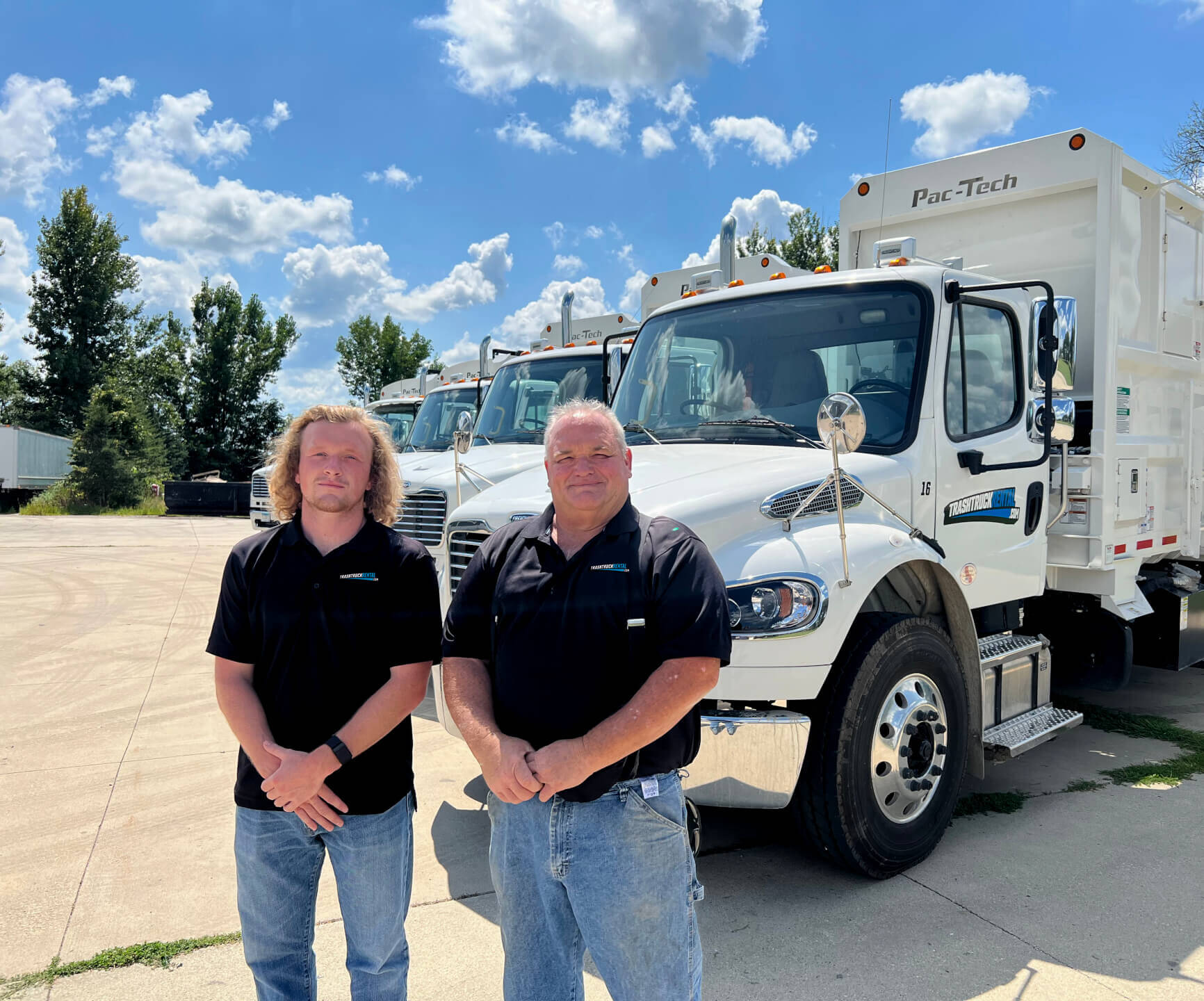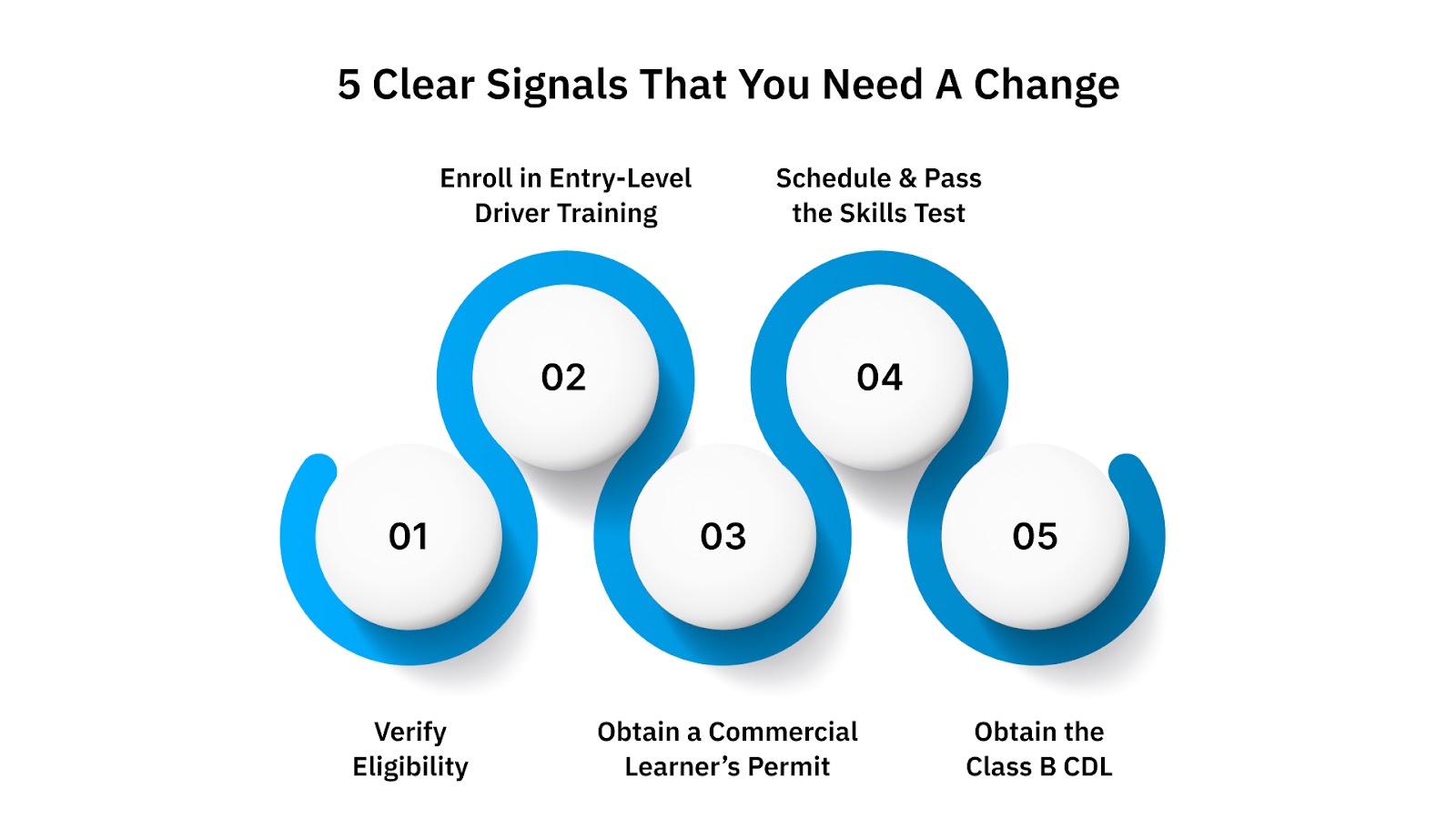What Vehicles Can You Drive with a Class B CDL?
Drive straight trucks, buses, dump trucks, and more with a Class B CDL. Discover vehicle types and operation. Check eligibility now!

Drive straight trucks, buses, dump trucks, and more with a Class B CDL. Discover vehicle types and operation. Check eligibility now!


Managing a municipal or private waste fleet requires more than just trucks; it demands drivers with the right qualifications to operate them safely and legally. The question many fleet managers face is: Is a Class B CDL sufficient for my waste fleet?
For waste management organizations, understanding what vehicles fall under a Class B CDL (Commercial Driver’s License) is key to ensuring compliance, reducing liability, and keeping operations efficient. This article breaks down the requirements and vehicle types covered under this license, so you will know where it applies to your operations.
To evaluate whether a Class B CDL fits your waste fleet, it’s essential to grasp its federal definition and how it compares to Class A and C.
Under FMCSA regulations (49 CFR § 383.91), a Class B CDL grants authority to operate:
In other words, if the vehicle alone is heavy enough, Class B covers it. If it’s hooked to a trailer, Class B is only valid when that trailer is relatively light (≤ 10,000 lbs). Interestingly, FMCSA also addresses whether a Class B holder may operate a truck tractor without a heavy trailer: the answer is yes, as long as that tractor isn’t pulling a trailer over 10,000 lbs.
To see where Class B fits in, here’s how it compares:
Because many waste trucks are not combination rigs (i.e., not pulling heavy trailers), Class B often suffices. But whenever your operation uses heavy trailers, roll-offs, or long combinations, you may need Class A status, depending on the maximum weight capacity.
If your drivers need the right trucks to put their Class B CDL to work, TrashTruckRental has you covered. We offer flexible leases, quality vehicles, and affordable solutions tailored to municipalities and waste businesses. Our goal is to be your trusted partner, delivering long-term reliability with community-focused values.
Once you understand the regulatory boundaries of a Class B CDL, the next question is: Which vehicles actually qualify under it?
For municipalities and private waste management companies, the following waste-fleet vehicles can typically be operated with a Class B CDL:
These vehicles are the backbone of many waste operations, and a Class B CDL allows drivers to safely and legally manage these essential fleets.
With these vehicle types in mind, you can now map your existing or planned waste fleet against Class B eligibility and identify which trucks will require a higher class license, special endorsements, or configuration adjustments.
TrashTruckRental offers flexible leasing and sales of garbage trucks, including automated sideload, rear load, and roll-off trucks for residential and commercial needs. Our leasing terms range from 28 days to two years, while lightly used trucks come with 4–5 years of remaining warranty. Take a look at our available trucks to find the right match for your operations.
While the FMCSA generally governs regulations around the CDL framework, there are some additional regulatory requirements that might come into play, depending on the vehicle type and area of operation.
For municipalities and private waste management companies, understanding the necessary endorsements, permits, and restrictions associated with a Class B CDL is crucial to ensure compliance and safe operations.
While a Class B CDL permits the operation of various waste management vehicles, additional endorsements may be required depending on the specific vehicle or materials being transported:
Some states and municipalities may have exemptions or additional requirements for waste management operations:
It's essential for waste management companies to consult with local and state authorities to ensure compliance with all applicable regulations and to obtain any necessary endorsements or permits for their drivers.
For municipal and private waste fleet operators, investing in driver training ensures your workforce is skilled, compliant, and capable of safely operating the vehicles your operations rely on. Helping drivers obtain their Class B CDL not only strengthens safety and efficiency but also protects your organization from liability and regulatory issues.

Here’s a step-by-step approach to getting your drivers certified with a Class B CDL:
Before beginning the process, ensure that your drivers meet the basic eligibility requirements:
As of February 7, 2022, all drivers seeking a Class B CDL for the first time must complete Entry-Level Driver Training (ELDT) with a registered training provider. This training must be completed before taking the CDL skills test. You can find a list of registered providers through the FMCSA’s Training Provider Registry.
After completing the ELDT, drivers must apply for a Commercial Learner’s Permit (CLP) by:
The CLP allows drivers to practice operating a commercial vehicle under the supervision of a licensed CDL holder, and is valid for a period determined by the state.
Once the CLP has been held for the required duration (usually 14 days), drivers can schedule a skills test, which includes:
The skills test must be taken in a vehicle that matches the class and type of license being sought.
After passing the skills test, drivers need to take the test completion documentation to the licensing office to finalize the Class B CDL. Depending on the state, they may receive the CDL immediately at the counter or have it mailed to them. They should carefully review all details on the license before leaving, as errors can be costly and time-consuming to correct later.
By following these steps, municipalities and private waste management companies can effectively train and certify their own drivers for a Class B CDL, ensuring a skilled and compliant workforce for their operations.
A Class B CDL is a key part of any waste management fleet, allowing drivers to safely and legally operate the vehicles that keep municipalities and private operations running smoothly. But a certified driver is only half the equation; the other is having reliable, well-maintained trucks capable of handling daily waste collection demands.
TrashTruckRental helps fill that gap by offering flexible leasing and sales of quality garbage trucks, including rear loaders, sideloaders, and roll-off trucks. Our services are designed with municipalities and private waste management companies in mind, providing vehicles that are ready to work and backed by warranties for peace of mind.
While primarily serving fleets in Minnesota, Wisconsin, and Iowa, TrashTruckRental is also open to supporting operations nationwide. Our aim is to support fleet managers across the country in maintaining high operational standards by helping them build a capable, dependable team with the right equipment.
Get in touch with our experts to receive a quote today!
Class B allows single heavy vehicles or trailers ≤10,000 lbs GVWR. Common waste trucks include rear loaders, front loaders, sideloaders, compactors, water trucks, brush trucks, and street sweepers.
Most waste trucks don’t require extra endorsements. Passenger (P), tank (N), or hazardous materials (H/X) endorsements may apply depending on vehicle type. Double/triple trailer (T) endorsements are usually unnecessary.
Yes, if federal and state requirements are met. Some states may require additional local permits or restrictions.
Drivers complete Entry-Level Driver Training (ELDT), get a Commercial Learner’s Permit (CLP), and pass the skills test. Fleet operators can manage this with registered providers.
They offer flexible leases and sales of rear loaders, sideloaders, and roll-off trucks, primarily in Minnesota, Wisconsin, and Iowa, with nationwide support available.
Ready to Upgrade Your Process Operations?